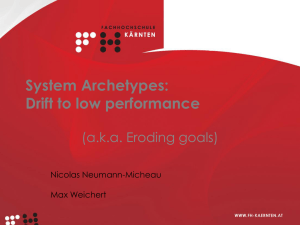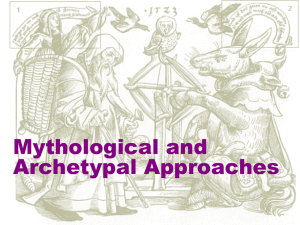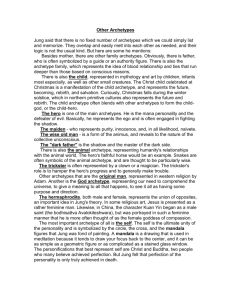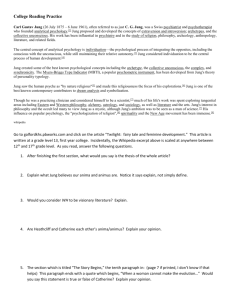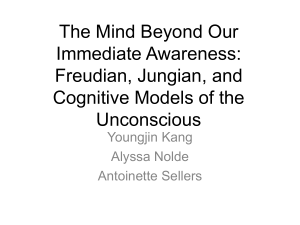Origins of Jung`s Archetypes
advertisement
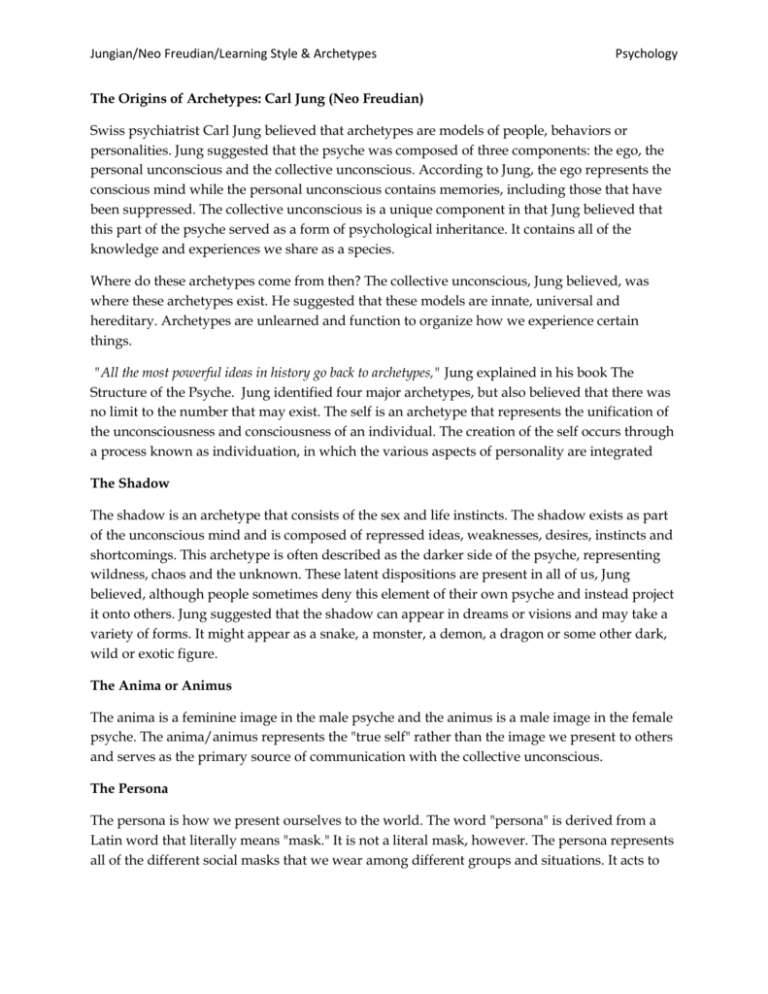
Jungian/Neo Freudian/Learning Style & Archetypes Psychology The Origins of Archetypes: Carl Jung (Neo Freudian) Swiss psychiatrist Carl Jung believed that archetypes are models of people, behaviors or personalities. Jung suggested that the psyche was composed of three components: the ego, the personal unconscious and the collective unconscious. According to Jung, the ego represents the conscious mind while the personal unconscious contains memories, including those that have been suppressed. The collective unconscious is a unique component in that Jung believed that this part of the psyche served as a form of psychological inheritance. It contains all of the knowledge and experiences we share as a species. Where do these archetypes come from then? The collective unconscious, Jung believed, was where these archetypes exist. He suggested that these models are innate, universal and hereditary. Archetypes are unlearned and function to organize how we experience certain things. "All the most powerful ideas in history go back to archetypes," Jung explained in his book The Structure of the Psyche. Jung identified four major archetypes, but also believed that there was no limit to the number that may exist. The self is an archetype that represents the unification of the unconsciousness and consciousness of an individual. The creation of the self occurs through a process known as individuation, in which the various aspects of personality are integrated The Shadow The shadow is an archetype that consists of the sex and life instincts. The shadow exists as part of the unconscious mind and is composed of repressed ideas, weaknesses, desires, instincts and shortcomings. This archetype is often described as the darker side of the psyche, representing wildness, chaos and the unknown. These latent dispositions are present in all of us, Jung believed, although people sometimes deny this element of their own psyche and instead project it onto others. Jung suggested that the shadow can appear in dreams or visions and may take a variety of forms. It might appear as a snake, a monster, a demon, a dragon or some other dark, wild or exotic figure. The Anima or Animus The anima is a feminine image in the male psyche and the animus is a male image in the female psyche. The anima/animus represents the "true self" rather than the image we present to others and serves as the primary source of communication with the collective unconscious. The Persona The persona is how we present ourselves to the world. The word "persona" is derived from a Latin word that literally means "mask." It is not a literal mask, however. The persona represents all of the different social masks that we wear among different groups and situations. It acts to Jungian/Neo Freudian/Learning Style & Archetypes Psychology shield the ego from negative images. According to Jung, the persona may appear in dreams and take a number of different forms. Other Archetypes Jung suggested that the number of existing archetypes is not static or fixed. Instead, many different archetypes may overlap or combine at any given time. The following are just a few of the various archetypes that Jung described: •The father: Authority figure; stern; powerful. •The mother: Nurturing; comforting. •The child: Longing for innocence; rebirth; salvation. •The wise old man: Guidance; knowledge; wisdom. •The hero: Champion; defender; rescuer. •The maiden: Innocence; desire; purity. •The trickster: Deceiver; liar; trouble-maker. Jung’s Learning Styles: Everyone has a distinctive learning style. These learning styles impact how well we learn under certain conditions. Some students learn best by hearing information, while others learn best by seeing it. A number of different theories have emerged to describe how students prefer to learn best. One learning style theory is based on the work of analytical psychologist Carl Jung, who developed a theory of psychological types designed to categorize people in terms of various personality patterns. Jung’s theory focuses on four basic psychological functions: 1.Extraversion vs. Introversion 2.Sensation vs. Intuition 3.Thinking vs. Feeling 4.Judging vs. Perceiving This theory later led to the development of the now-famous Myers-Briggs Type Indicator. In addition to influencing personality assessment, Jung's dimensions can also be used to assess and describe various learning styles. While each dimension represents a unique aspect of a learning style, it is important to remember that your own individual learning style may include a combination of these dimensions. For example, your learning style might include elements of extroverted, sensing, feeling, and perceiving learning styles. Read more about each individual dimension in order to determine which combination best describes your unique style


